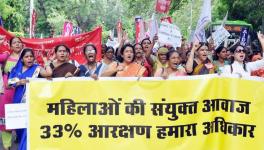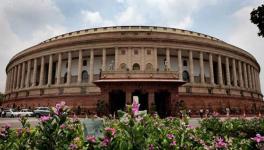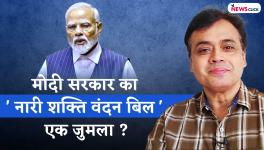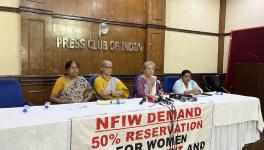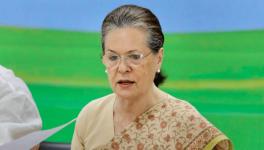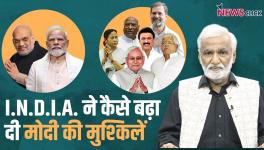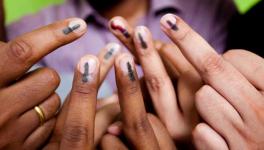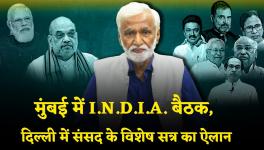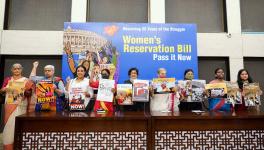Charting Performance of Women MPs From Reserved Seats
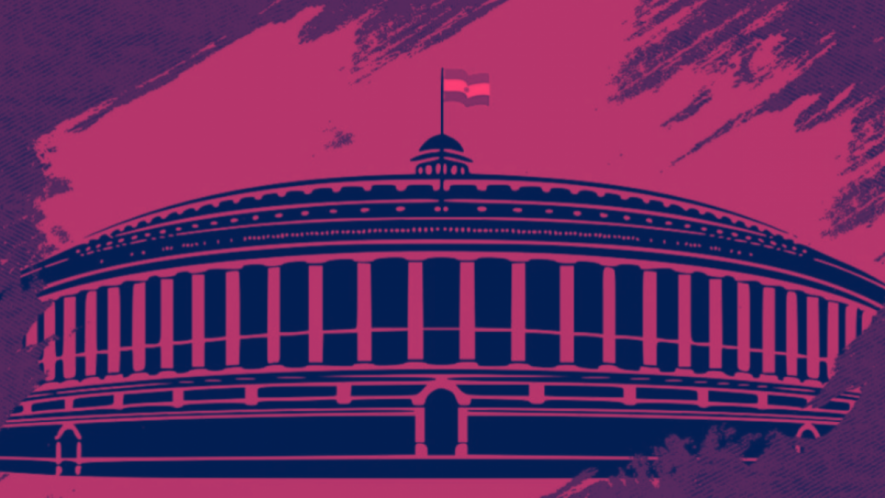
Representational Image.
Parliament is scheduled to convene a special session from September 18 to 22, although the 12th session concluded only a month ago, in early August. The buzz about the agenda is on multiple fronts, including that the government will move for changes in the electoral system that are relevant to the Lok Sabha election 2024.
A crucial aspect of Indian parliamentary democracy is representation, especially for the disadvantaged sections, categorised as the Scheduled Castes and Scheduled Tribes. In every election, seats are apportioned for candidates from these social classes to ensure adequate representation of their concerns and issues.
One possibility being speculated for the forthcoming session is that the government will pursue reservations for women in Parliament on a broader scale, a contentious political issue with numerous dimensions, including of sub-reservation within women’s reservation. There is already 33% reservation in India since 1992 in the Panchayati Raj Institutions.
However, there is certainly recognition in the Indian polity that women, backward communities, apart from the Scheduled Tribes and Scheduled Castes, need adequate representation in Parliament.
In this context, it is helpful to chart the performance of women Members of Parliament, including those elected from the reserved seats from across the nation.
There are 543 members in the Lower House of Parliament, with 24.03%—translating into 131 seats—reserved for leaders from the Scheduled Castes and Schedule Tribes. There are 25 women Members of Parliament in the Lok Sabha from these reserved seats.
The data shows that women in the 17th Lok Sabha asked fewer questions, participated in fewer debates, and introduced a few Private Members’ Bills.
The highest number of debates by a male Member of Parliament until the 12th Session of the latest Lok Sabha is 1,138, by Pushpendra Singh Chandel of the Bharatiya Janata Party (BJP). He represents the Hamirpur seat in Uttar Pradesh in the Lok Sabha.
This number among women Members of Parliament drops significantly, to 223 debates, participated in by Supriya Sule of the Nationalist Congress Party from Maharashtra.
However, the gap between male and female Members of Parliament contracts when it comes to the maximum number of questions asked or raised in the House and Private Members’ Bills introduced.
The highest number of questions asked by a male Member of Parliament was 600, and the number of Private Members’ Bills introduced by a male Member of Parliament was 19.
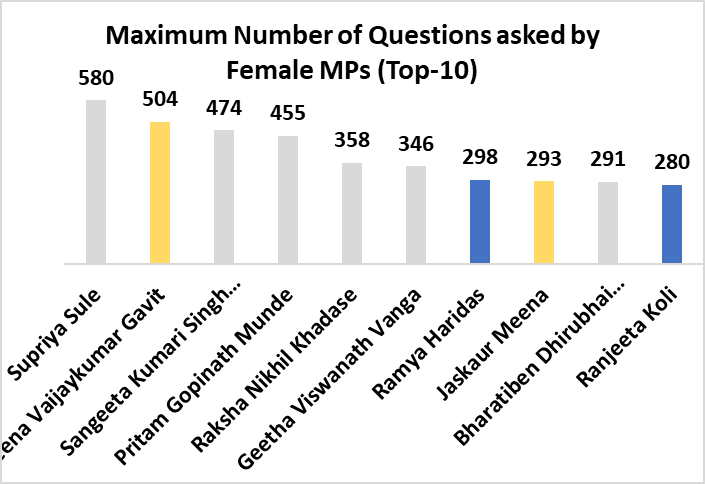
For women Members of Parliament, the corresponding numbers were 580 questions asked and 16 Private Members’ Bills introduced. Indeed, the gap narrows significantly, indicating healthy and active participation.
Supriya Sule is the Member of Parliament who has given male counterparts a “competition”, and she appears to be the most active female Member of Parliament in the current Lok Sabha. Sule leads in all three categories used to measure the performance of women Members of Parliament.
The list of the “top ten” women Members of Parliament, in terms of the highest numbers of debates they participated in, includes five from reserved seats.
In both categories—women Members of Parliament who asked the maximum number of questions and introduced the most Private Members’ Bills—there are four women Members of Parliament from reserved seats.
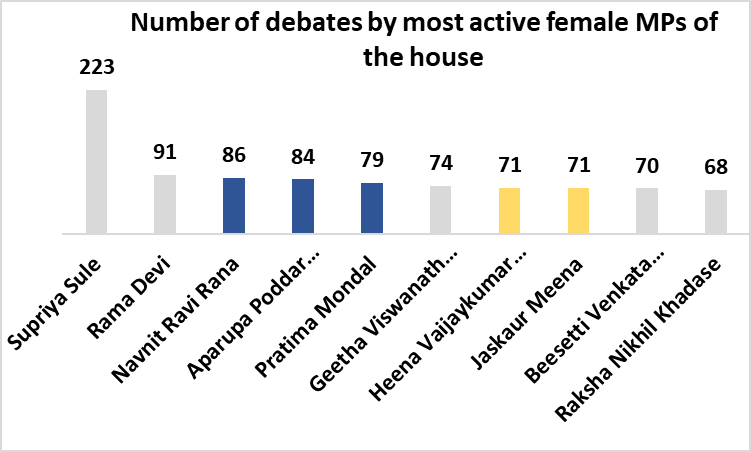
However, the participation of women Members of Parliament in debates shows significant discrepancies. While Supriya Sule participated in the most debates at 223, Rama Devi, the BJP Member of Parliament from Sheohar in Madhya Pradesh, participated in the second most, with 91 debates. That is a significant gap by any yardstick.
Renuka Singh Saruta is currently serving as the Minister of State for Tribal Affairs, being a minister, doesn’t sign the attendance register. Hence, PRS Legislative Research doesn’t maintain her record, and it brings the number of women Members of Parliament we can analyse on certain parameters down from 25 to 24.
The maximum number of questions from a woman Member of Parliament elected from a reserved seat is 504. It is a record held by the BJP’s Dr Heena Vijay Kumar Gavit, the Member of Parliament from the Nandurbar constituency in Maharashtra, followed by Ramya Haridas of the Congress party from Kerala’s Alathur constituency, and Jaskaur Meena, also from the BJP. Himadri Singh, again from the ruling party, is the Member of Parliament from the reserved seat of Shadol in Madhya Pradesh. She asked only 23 questions—the least number of questions asked by a women Member of Parliament in the reserved category—in the latest Lok Sabha session.
In terms of the overall picture, the 25 women Members of Parliament from reserved parliamentary constituencies asked a combined 4,111 questions.
Although women Members of Parliament from reserved constituencies asked fewer questions, they performed well. This is, sadly, also because women Members of Parliament are less active in debates than their male counterparts. This is how five of top ten women in the Lok Sabha in terms of active involvement in debates, are from the reserved seats.
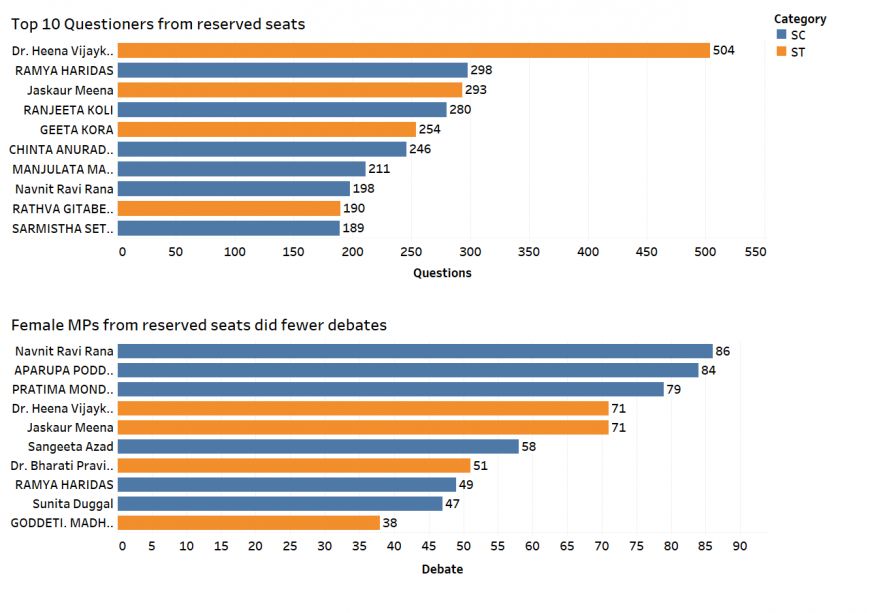
Navnit Ravi Rana, an independent Member of Parliament from Amravati in Maharashtra, engaged in the maximum number of debates among Members of Parliament from reserved seats. She ranks as the third most active woman Member of Parliament in terms of participation in debates.
Out of 24 women Members of Parliament won from the seats reserved for Scheduled Castes and Schedule Tribes, (and who also signed the register in the Lower House of Parliament), Bharti Pravin Pawar, Minister of State for Health and Family Welfare, has the highest attendance with 97%.
It is also noteworthy that of these 24 women Members of Parliament, 21 maintained a higher than 60% attendance.
Navnit Ravi Rana, and the Trinamool Congress Party’s two women Members of Parliament Aparupa Poddar (Afrin Ali), and Pratima Mondal, have been the three most active women MPs in terms of participation in debates among other women in the Lok Sabha who won from a reserved constituency.
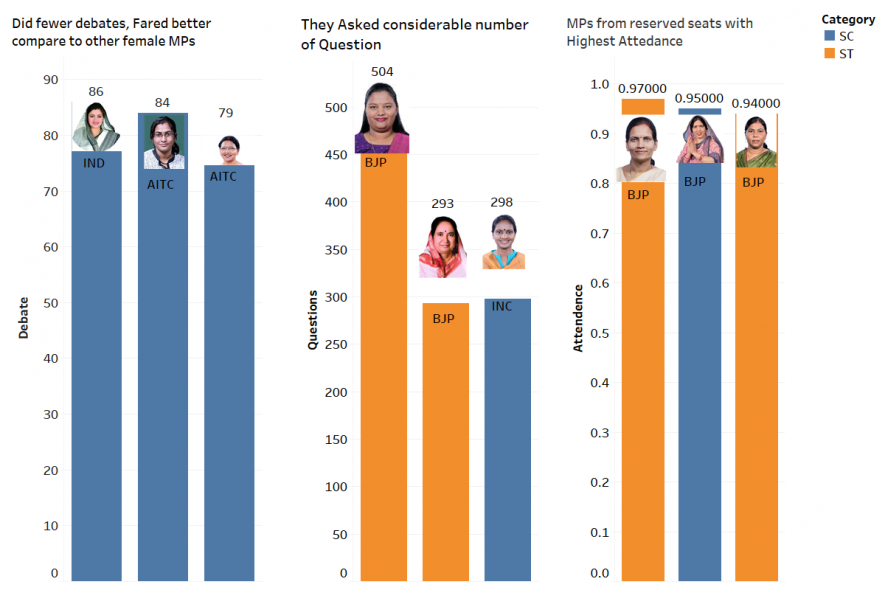
Dr Heena Vijakumar Gavit, Ramya Haridas, and Jaskaur Meena asked the maximum number of questions, while Bharti Pravin Pawar, Ranjeeta Koli (BJP), and Gomati Sai (BJP) regularly attended Parliament with attendance rates of 97%, 95%, and 93%, respectively.
Data sources: Election Commission of India and PRS Legislative Research.
The author is an independent journalist. The views are personal.
Get the latest reports & analysis with people's perspective on Protests, movements & deep analytical videos, discussions of the current affairs in your Telegram app. Subscribe to NewsClick's Telegram channel & get Real-Time updates on stories, as they get published on our website.









